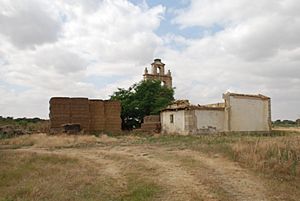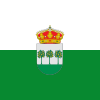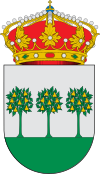Perales, Palencia facts for kids
Quick facts for kids
Perales
|
|||
|---|---|---|---|
 |
|||
|
|||
| Country | |||
| Autonomous community | |||
| Province | |||
| Municipality | Perales | ||
| Area | |||
| • Total | 27 km2 (10 sq mi) | ||
| Population
(2018)
|
|||
| • Total | 90 | ||
| • Density | 3.33/km2 (8.6/sq mi) | ||
| Time zone | UTC+1 (CET) | ||
| • Summer (DST) | UTC+2 (CEST) | ||
Perales is a small municipality located in the province of Palencia, in the region of Castile and León, Spain. It is a quiet place with a small population.
According to the 2018 census, about 90 people live in Perales. This makes it one of the smaller towns in the province.
Contents
Where is Perales?
Perales is found in the northern part of Spain. It is part of the province of Palencia. This province is known for its wide open spaces and farming areas.
The municipality covers an area of about 27 square kilometers. This is roughly the size of 2,700 football fields.
Geography and Surroundings
Perales is located in a rural area. This means it is surrounded by countryside. You will find fields and natural landscapes here.
The exact elevation of Perales is not specified. However, the region of Castile and León is generally quite high up.
Life in Perales
Life in Perales is likely peaceful and community-focused. With a small population, everyone probably knows each other.
The main activities in the area are often related to agriculture. This means farming and raising animals are important.
Local Government
Like all municipalities in Spain, Perales has its own local government. This government helps manage the town's services. These services include things like roads and public spaces.
The local government works to improve the lives of the people in Perales.
What to See
While Perales is small, it has a notable building. The Church of Nuestra Señora de las Nieves is an important landmark.
This church is a key part of the town's history and culture. It is a place where people gather for religious events.
Time Zone
Perales follows Central European Time (CET). This means it is one hour ahead of Coordinated Universal Time (UTC+1).
During the summer months, they observe Central European Summer Time (CEST). This shifts the time to UTC+2. This change helps make the most of daylight hours.
See also
 In Spanish: Perales (Palencia) para niños
In Spanish: Perales (Palencia) para niños



